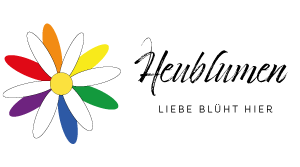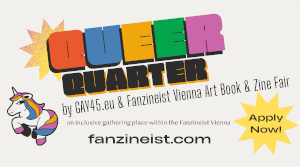By Jude Jones
Romain Berger describes his photography, in four words, as colourful, subversive, cinematic, and queer. Browsing his portfolio, it’s hard to disagree.
Toned men, whose physiques fall somewhere between Ryan Gosling in Greta Gerwig’s Barbie and a Tom of Finland sketch, glow plastically beneath hyper-saturated, ultra-vibrant lights. The results are kitschy and erotic, a surrealist pornography that gives the impression of watching a Nan Goldin or Philip-Lorca diCorcia slideshow a couple of hours deep into an acid trip, or some alternate-reality Wong Kai-wai/Gregg Araki collab. Based in France and steadily building an international name (his work has been displayed in Berlin’s famous Schwules Museum, featured in magazines such as Advocate and Attitude, and he is currently working with the iconic Greek fashion house Modus Vivendi), GAY45 is honoured to invite Romain to tell us more about his work and what it means to capture gay life.


Jude: Hi Romain, thank you so much for taking the time to talk with us. Let’s begin with just a little bit more about yourself. How did you get into photography, and what did your beginnings look like?
Romain: I studied film at university and, when I graduated, I moved to Paris to find work. I was there for over a year searching for a job in the film industry, sending out lots of applications, and meeting new people. But all I got was rejections.
In 2013, I got tired of being told “no” and decided to buy my own equipment to make short films. That’s how I got into photography. I was entirely self-taught.
Your photographs are so uniquely and powerfully stylised, though, which is impressive for somebody self-taught. It’s all very cinematic, the film background really screams through. How did you end up creating these super stylistic pieces? All the bold compositions, the saturated colours, the doll-like models…
My first artistic creation was in November 2017, two months out of a two-year relationship. I think I needed something new. I wanted freedom, an explosion of colours, and photography was the only way to express what I felt. So it all started like that.
Is that all done on set, or in post? The colours just seem so otherworldly, I can’t even imagine being able to create something like that.
The colours seen in my photos are all achieved on set. I use coloured gels similar to those used on movie sets. It’s truly my love for cinema that led me to this technique, along with some previous experience on film sets.
Let’s talk a bit more about film then. Who are your favourite directors, or artists in general? Where did you get the inspiration for your work?
My inspirations are a mix of music, cinema, and photography. My staging is very inspired by David LaChapelle. And the colours by Gregg Araki. But other artists like James Bidgood, Lil Nas X, or Robert Mapplethorpe inspire me on a daily basis, too.
Your inspirations, as well as your subjects, are all overwhelmingly gay, then. Has this always been the case? What’s so exciting about capturing gay themes and bodies for you, as an artist?
The subjects of my photos are mostly gay, but not all. It’s more rare, but I have had women in my images. And that’s something I’d definitely like to explore more.
To be honest, I didn’t set out to do something gay at the start of my career. It just happened naturally. My main goal was to objectify men, turn them into sexual objects like we so often do to women. So, I wanted to pay homage to women, by turning those stereotypes on their heads. And, very quickly, this turned my work into something really gay.


Drag artists feature a lot in your images too. How did you get into photographing drag performers?
I love working with drag queens because it’s so theatrical. It’s like being in the theatre: you’re immediately immersed in their world. It’s also easier for me because drag queens have a sense of comedy and rarely have any taboos. My favourite memory is a photo shoot I did with a drag queen, in fact; with La Briochée, who competed on the first season of Drag Race France.
Have you ever considered drag yourself? The theatricality would suit you!
I have never considered doing drag. It’s far too complicated for me; it requires patience, makeup skills, and all that is too much for me to learn. However, I do enjoy capturing drag because I just find it wonderful. It’s an art that requires a lot of courage.
Working as a photographer with other queer artists in France then, have you been able to find a big queer creative scene in the country?
The queer creative scene in France exists, but unfortunately, especially for visual artists like for me, it’s very hidden. Not many art galleries are willing to exhibit my work, or any work that goes beyond social norms in general. I’m speaking for myself here, but other queer artists I know have said the same.
From the outside, people often think that France is quite open. But that’s not true at all when it comes to the art world. You have to fit into certain boxes. If you don’t, you’ll get rejected. I’m much more promoted by foreigners than by people in my own country.
What does the future look like for you, what projects are you working on now?
Right now, I’m preparing for a one-month exhibition in Paris this May and an exhibition in Barcelona in July. I’m also trying to get in touch with Olly Alexander, who I’ve dreamt of photography for years (so, Olly, if you’re reading this!).
This interview was originally conducted over email, however aspects have been edited and reordered for this piece.
You can view more of Romain’s work on his website, www.romainberger-photography.com. To support him, you can buy his book, LIFE’S A CABARET, published through Men on Paper in 2022, and follow his Instagram page, @romainb_photos.
Jude Jones (@jude_j0nes2002) is the Managing Editor of GAY45 and is an interdisciplinary student journalist, currently completing an undergraduate degree in History & French at the University of Cambridge. Their writing – covering photography, nightlife, fashion, gallery reviews, interest pieces, and political comments – has also been published by Varsity, The Cambridge Language Collective, DISRUPTION, and the Cambridge Review of Books, among others.
– – –
ONE MORE THING…
EXCLUSIVE CONTENT. AND A PODCAST TO EXPAND THE KNOWLEDGE.
Because we love you we offer our podcast for free. That does not mean the journalism is free. You can help the production of quality journalism by donating 2-3€ a month.
For your dedication and support, we offer subscriptions including fresh exclusive content every week, access to The 9 and Five Must Reads newsletters before being published, and more. For our weekly premium newsletters subscribe to Substack.
Yearly subscriptions come with a printed, signed and numbered collectable edition of the magazine.
GAY45. SUPPORT. WE NEED YOU.
Support GAY45’s award-winning journalism. We need help for our mission.
You can donate to or support our Queer Journalism Campus on PayPal. You can also buy our merchandise.
We appreciate it. Thanks for reading.



















